This piece first appeared on The Wine Siren
{VIDEO} BIERZO, SPAIN WILL MAKE YOU FEEL LIKE YOU’VE STEPPED BACK IN TIME.
BUT IT IS THE WINE, MADE FROM THE GRAPE MENCIA, THAT WILL STEAL YOUR HEART.
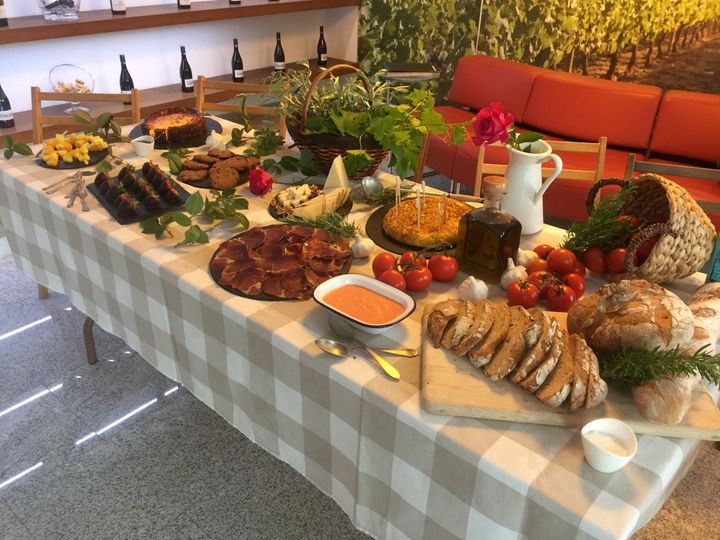
Food & wine are a major part of this rich culture
Traveling to Spain is not on my short list, but I am always up for an adventure. This road less traveled sounds like the perfect escape. I’m heading to a wine region completely new to me. Not only have I never been to this destination, I’ve nary a sip of the wine. France is probably the most well known European wine destination, but Spain? We’ve all heard about Rioja, perhaps experienced a bit of Spanish wine in one of those daring moments in a wine store or restaurant. This time around, I’m ready! Looking forward to learning more about Bierzo, it’s wine, the region, and the people. What I don’t realize is this adventure, this wildly unexpected adventure will impact me like no other.
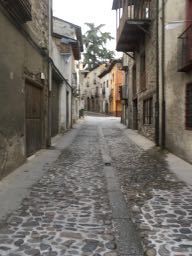
The narrow quiet streets of Villafranco in Bierzo, Spain
Bierzo is in the Province of Leon. It borders another more well-known wine region in Spain, Galicia. It is three hours northwest of Madrid. Just northeast of Portugal and 2 hours from Santiago de Compostela, the incredible 11th-century gothic cathedral. Bierzo is an isolated area with 375 villages surrounded by mountains. The upper basin of the Sil River cuts through the middle of Bierzo in Villafranca. The banks of the river are rich in minerals making Bierzo ideal for agriculture. The richness comes from the tectonic fossae (pit) it resides in. The climate is influenced by the Atlantic ocean and ideal for viticulture. Humid,with moderate temperature fluctuations, Bierzo has soil rife with granite and slate. The uniqueness of this terroir adds delightful nuances to the wines of Bierzo.
Most of the vineyards are hilly, rocky and small. It wouldn’t make sense to try and use a machine. Handpicking is the only way to harvest. There is no way to automate this process based on the hills and rocks.
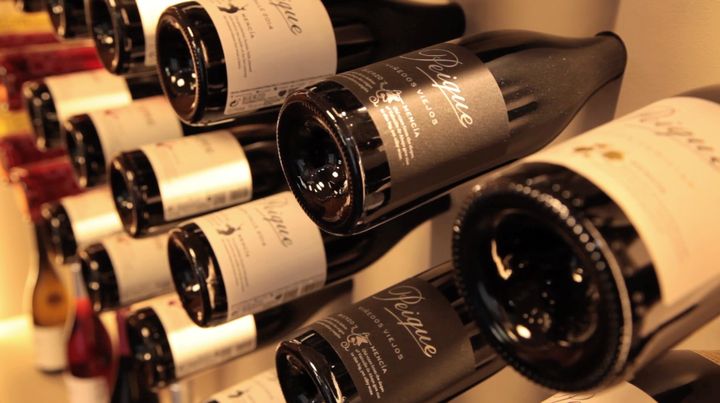
The wines of Bierzo are deeply-rooted in history dating back to 12 AD.
The Journey.
Bierzo’s closest major airport is Madrid. The 3-hour journey was fields and trees, broken up with a phenomenal lunch and my first taste of Spanish food.
The landscape is modest until you get closer to the region. Then the valleys unfold. The hilltops transform into mountains and the vineyards roll out before your eyes. This is Bierzo.
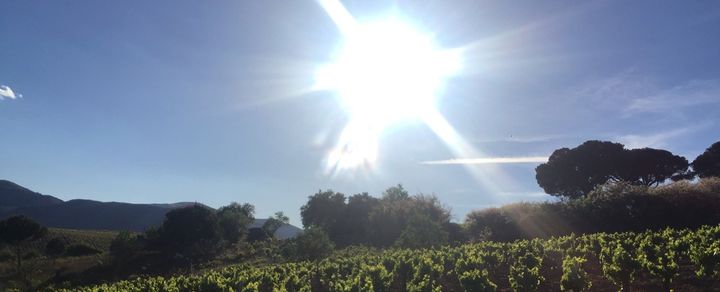
The sprawling valleys are surrounded by a protective embrace of mountains in Bierzo
I stayed in the quiet, peaceful village of Villafranca del Bierzo. This magical place is on the route of the pilgrims who travel on the Camino de Santiago (The Way of Saint James). It was THE Christian pilgrimage of the Middle Ages and continues to be popular. You can’t go five minutes without seeing pilgrims backpacking their way through the village.

Downtown Villafranca, Bierzo, Spain
It was the ancient Romans who made the first big foray into viticulture.Transforming the production process and finessing the taste of wine was among their achievements. They believed that wine was a vital ingredient to daily life. Drawn to this area by the rich soil and gold they preyed upon this pristine location. Mining was an integral part of the empire. Gold was the fuel that enabled them the means to conquer.
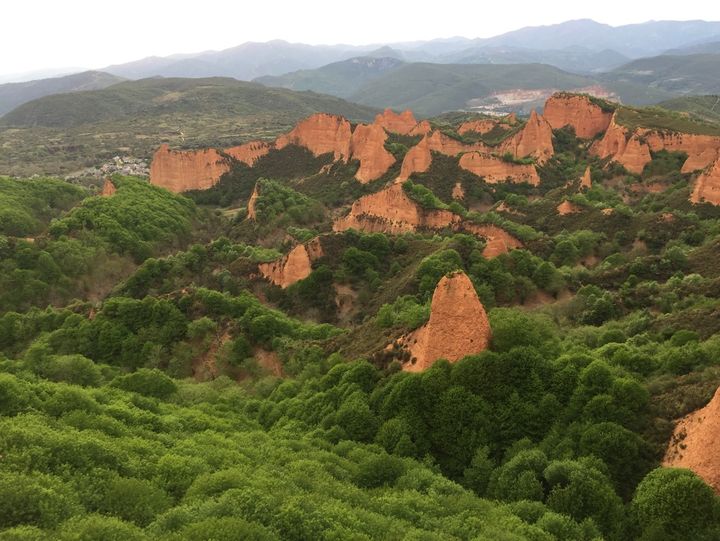
Las Médulas. The red soils bared to mine for gold.
The rich soil made it easy to farm the land and introduce vines and other crops to the region. Their history dates back to 29 BC. The ruins of this failed empire remain in the way of forts and roads. They built a man-made lake and unleashed torrents of water at the mountains to mine the gold. At the bottom of the mountains waiting below for the runoff, workers would gather the riches. Today you can view the handiwork of the Romans at a place called Las Médulas. It’s both breathtaking and dramatic.
When Christianity & the Middle Ages arrived Monasteries used Bierzo to expand viticulture. Castles such as the Templar Castle of Ponferrada, add to the beauty and history.
Bierzo would not be immune to Phyloxxera in the 19th century when many left the region.
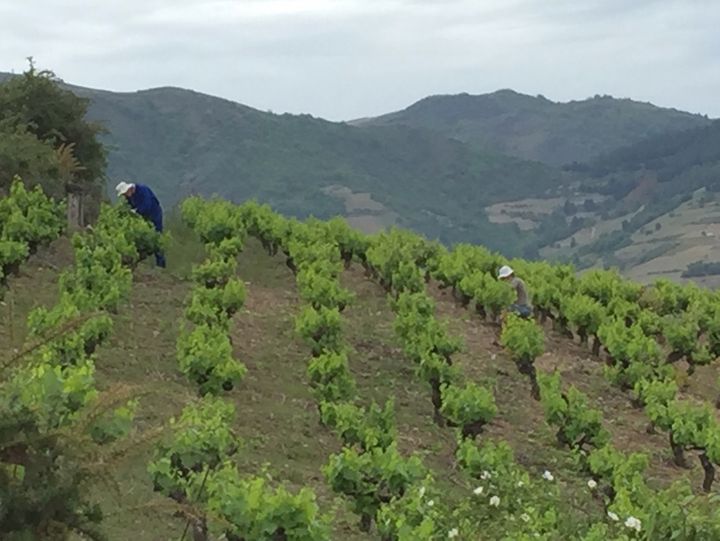
Vineyard workers hand pruning on the hillside.
Today, Bierzo has a thriving wine business and for good reason. This vast experience in winemaking has transformed into intriguing and unique wines. The grapes most produced are Mencia and Godello. Mencia, a red indigenous grape makes up over 2/3 of all grapes grown in the region. The grape produces wines with different weights. From a Pinot Noir like quality to the complexity and weight of a Cabernet Sauvignon, it has range and depth. I found the red wines amazing. Often with a whisper of violet on the nose, fresh fruit, minerality and elegant tannins. These wines are a testament to the region. Not only do the wines show well when young but many can stand the test of time. The most remarkable wine I tasted was a Chardonnay (yes that grows in Bierzo as well) aged to perfection from 1998 and made by Pablo García and his wife, enologist Noelia of Perez Caramés Winery. I’ve had a few Chardonnays that aged well, but few. This one was an incredible testament to the region and how well they are making organic wines.
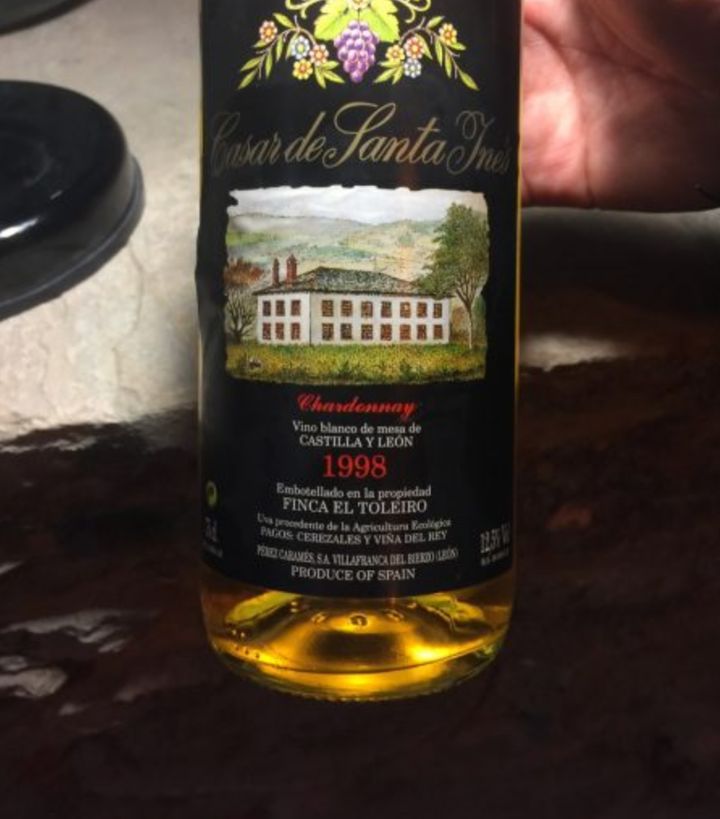
In the top 1% of wines in the world the 1998 Casar de Santa Ines Chardonnay
Wine has been part of this region forever. Often people made wine for their own consumption or to use in trade. To understand why the vineyards are small, you have to understand part of the culture.It is a tradition for the vineyards to be passed down to the sons in the family. The vineyards remained in the family with the family name intact. The family divided the land according to how many sons were in the family. In some cases, there are scores of parcels. Scattered throughout the region several kilometers away creating a logistical nightmare.
The Adventure and Highlights of the Bodegas
It is sunset on day one. We are stopping at the first tasting of the trip to meet the vintners. Our host is Merayo Winery and we are meeting in their vineyards. I’m exhausted by travel through multiple time zones, but the view and the wine beckon. The landscape is picturesque and invigorating. It’s twilight and the light and temperature could not be more perfect. The gentle breeze makes me shiver, but I shrug it off and focus on the conversation at hand. Pedro Merayo spent years recovering family wine roots and restoring his 110-year-old vineyards. He talks about the journey of returning to making wine in 2010. He stepped away from making wine because his vineyards needed work. Today the vineyards are thriving and the investment was well worth it. It shines through his wines. These are the stories that pique my interest. How do you put something down then return to it with a vengeance? Easy. Passion. Pedro and the Bodega of Merayo made the investment of time work. His outstanding wines have garnered a 90+ point rating from top critics.
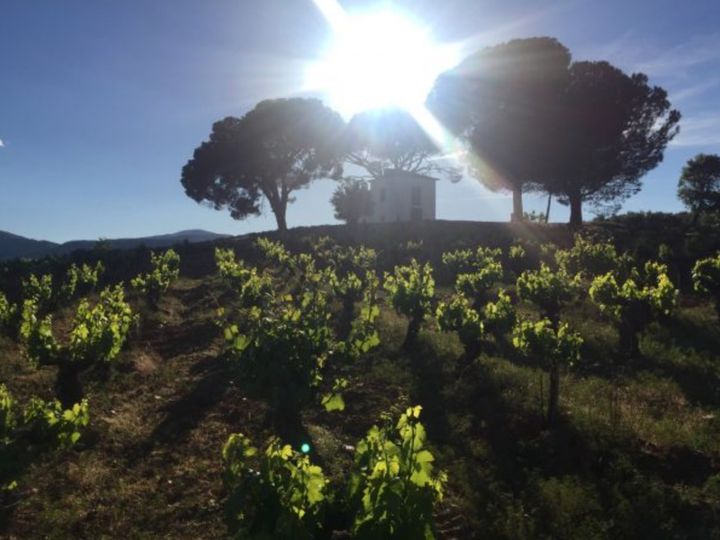
Sunset from the vineyards of Merayo, Bierzo, Spain.
A new day and we are heading to the village of Valtuille and to Vinos Valtuille. Marcos and Elena Garcia, the brother-sister team are Vinos Valtuille. They’ve brought a basket of bites and their wine to taste in their vineyards. Set just below an ancient Roman settlement the vineyards bask in the morning sunlight. Their ancestors worked these lands for years. In 1999 Vinos Valtuille was launched. 90-year-old vines sit on 12 hectares. By the taste of the Godello we tasted in their vineyard, the age of the vines is a factor in how the wines resonate. The wine is memorable with a long delicious finish. There are nuances of stone fruit and citrus. It’s refreshing, mouthwatering balance makes it a great wine for grilled octopus.
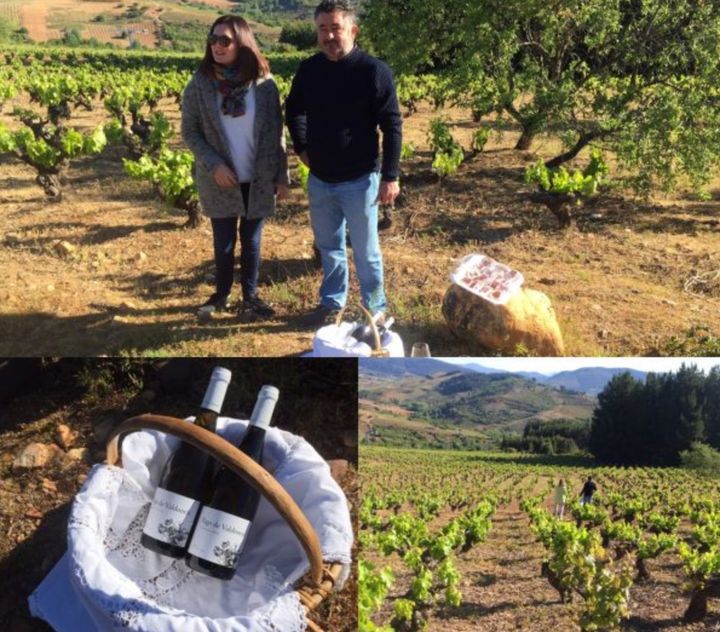
Marcos and Elena Garcia, brother and sister team at Vinos Valtuille
Doña Rocío of Bodegas Adriá started the mass production winery with her husband many years ago. Today the winery has three of her daughters involved in the day to day operations. The wine they produce is in part by volume. The tanks and holds contain well over 1million gallons of wine. This wine is destined for France and other countries where it will later be blended and packaged. Bodega Adriá is primarily run by Rocío’s granddaughter Margarita. Today they are producing their own line of ageable wines .
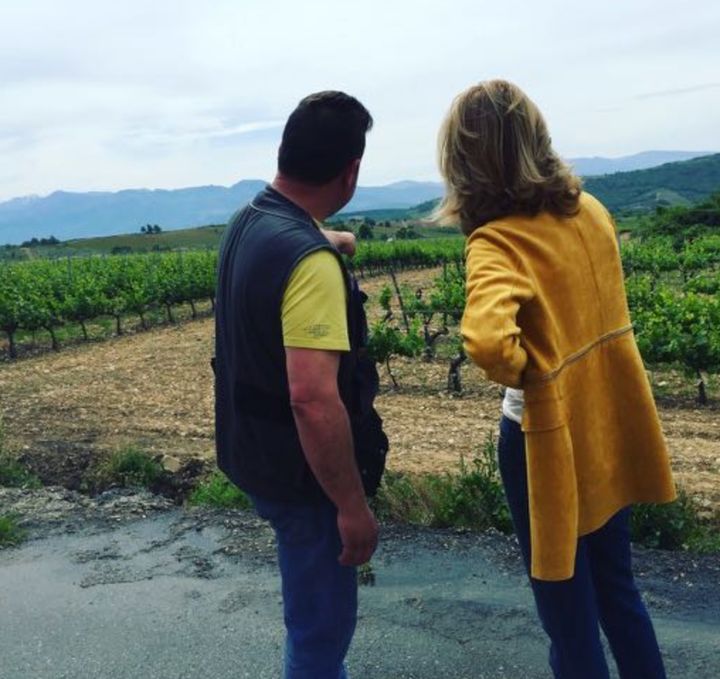
Bodegas Adriá, Margarita López Teijón’s surveys the vineyards with winemaker
Ribas del Cúa Bucking the trends of the past, the Ribas del Cua Winery is run by the women. The goal of the winery? To unify land and produce top quality wines made with Mencia. Working with their neighbors they were able to acquire a total of 60 hectares of wines to expand their production from over400 original plots. A favorite of mine was the Ribas del Cúa Privilegio. The intense black fruit, cassis, vanilla, and spice made this full-bodied wine a hit. The balance was incredible and the finish, long and delicious. The wines they produce are intense and varied. Food pairing perfection. Like all of the Bierzo wines, well worth exploring.

Ribas del Cúa Privilegio
BIERZO STANDOUTS TO SEEK OUT (TO NAME A FEW).
Pittacum Six friends set out to produce high-quality Mencia wine and they’ve succeeded. The brand is contemporary, the wines are delicious and thought-provoking.
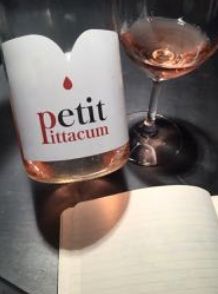
Bierzo wine from Pittacum
Versos de Valtuille Passion projects in wine are many, but there are not many with the spirit, soul, and fight of one Laura Estéves. This bodega is up and coming.. The wines are young and the family is reestablishing the winemaking tradition started by Laura’s great-grandfather. This is one to watch.
Casar de Burbia Making wine since just 1998 this father-son venture has received international recognition. Son, Isidro Fernández Bello is taking the winemaking process to new heights through his intense know-how in the tech space and reinventing how wine is made using technology. It shines through his wine. They’ve achieved cult wine status. The wines are memorable, well balanced and exceptional.
Bodegas Peique There wine project was open the masses in 1999. The reviews are outstanding. Scores from pro reviewers like Robert Parker are at 90+ on almost every wine they produce. Consistency on every wine. Varietal and blend. Pretty outstanding.
Luna Beberide While this winery makes several wines, there was a standout. Paixar, a full bodied 100% Mencia red. Black cherries, mocha, and thyme truly make this wine memorable. This red can age as well.
Estefanía Winery Laden with 100-year-old+ vines, this winery has some of the biggest harvest challenges. The steep vineyards of over 800 meters (2600 feet) enable just 10-15 kilos of bins to be filled at a time. This laborious effort and altitude results in wines of breathtaking acidity and balance. My favorite? Tilenus Godello.
Each of the wineries I visited had something unique and remarkable to offer. It’s refreshing to see people who are taking big chances on wine in a region steeped in tradition. Bierzo is on my personal favorites in wine regions of the world.
More for your itinerary: Luzdivina Amigo Winery, Castro Ventosa Bodega, Bodegas Godelia
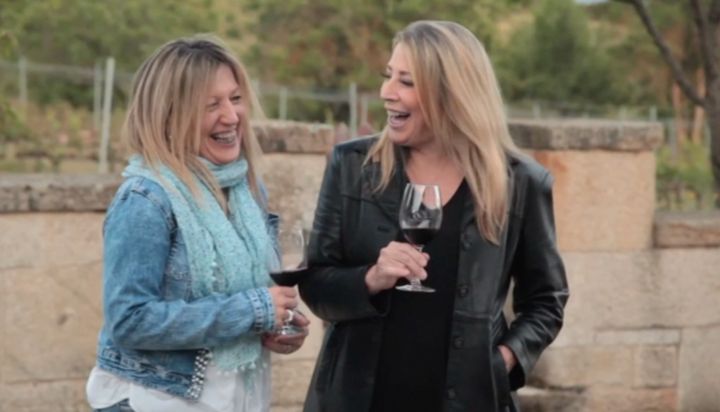
The people, like Eva Blanco Moragas make the experience of the region most memorable.
Highlights of the Visit.
Las Medulas. Romans used their architectural prowess building aqueducts to mine gold. This extraordinary site dates back to 1AD. The gold funded their expansion of the Empire. By blasting water at the mountains, they created water channels for flow. At the base of the mountain people would wait below to sift and separate the soil from the gold. Today, this is a World Heritage Site.
Palacio de Canedo. Once an abandoned castle it has always been a Palace. Today it is an exquisite 14 room hotel . There is an indelible charm you couldn’t get from a new building. There are choices for food in multiple restaurants, and a full store full of all the takeaways you can imagine, including wine and gifts. The visionary behind this concept? Prada. Also known as Jose Luis Prada Méndez. Prada and his wine are Bierzo legends.
Santa María de León Cathedral. The palace of light as it is also known as it the city center of Leon. Built in the 1400’s this Gothic cathedral it features 130 intricate stain glass windows. Entombed in the cathedral is a single king, Ordoño II.
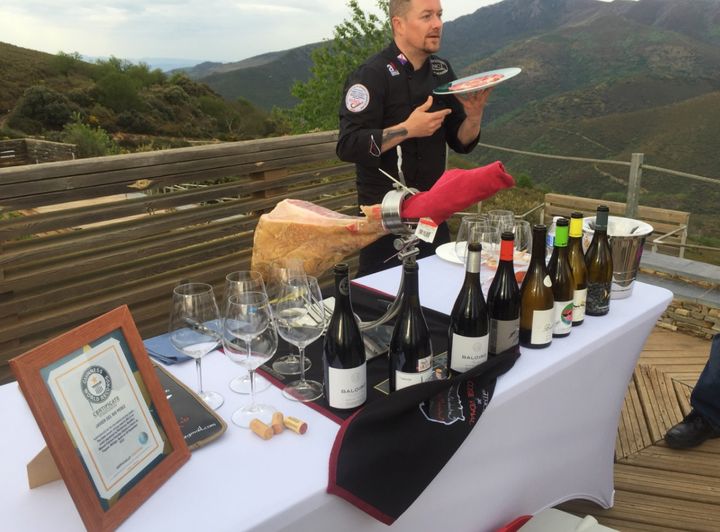
View from Las Médulas, wine tasting with certified Jamón Iberico professional carver
Villafranca. This was my headquarters. I stayed at the Parador de Villafranca Hotel which was walking distance from the town center. The town is like a diamond. The many facets offer glimpses into so many different eras, views, and surroundings. Every morning I would run from the hotel to the river and back. The streets were always desolate at 7:30 am. Perfectly quiet. A solitude you don’t feel in the US.
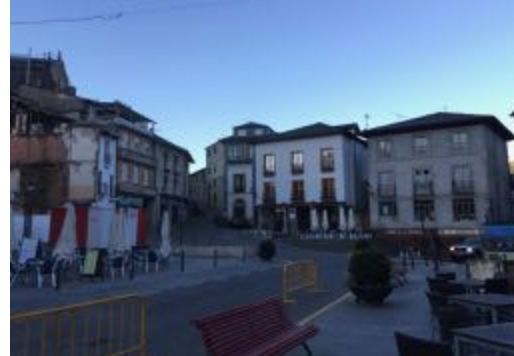
Barren streets in Villafranca on my morning runs.
It was a time to reflect and take in the beauty of my incredible surroundings. What surprised me the most, was at that time the streets were virtually bare. No hustle and bustle. I thought to myself, “Am I safe here running with no one around.” I asked my host, Alicia. She chuckled and said “You are perfectly safe. You may not see anyone in the streets, but the people, they see you. This crazy American woman running so early in the morning.”
Bierzo Wine There is a preconceived notion about Spanish wine that it isn’t good enough. Bierzo is different. The grapes are different the soil is different as is the terroir. The Atlantic climate provides the necessary dynamics to grow amazing fruit. The region has all the elements to make outstanding wine and they do. These wines are special. In the landscape of wine history and on the palate. They leave an indelible impression.
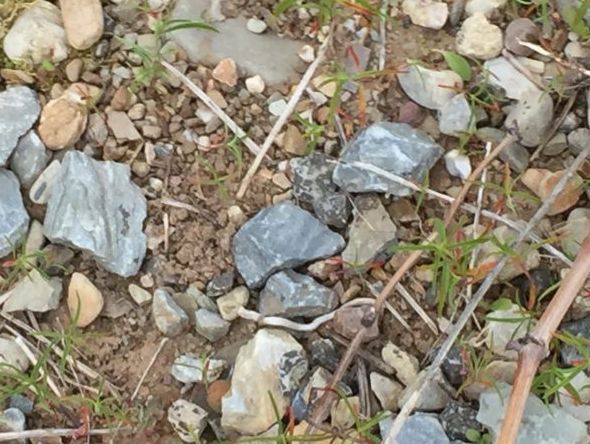
Granite, slate, sand all part of the rich Bierzo soil
Back in Napa… I didn’t have to look far to get another taste of delicious Bierzo. Those in the know have already discovered this Compline Wine Bar & Restaurant in Napa, home of MS Matt Stamp and Ryan Stetins. They serve Bierzo wine in Napa. It’s good to know it’s close to home now that I’ve discovered the region.
